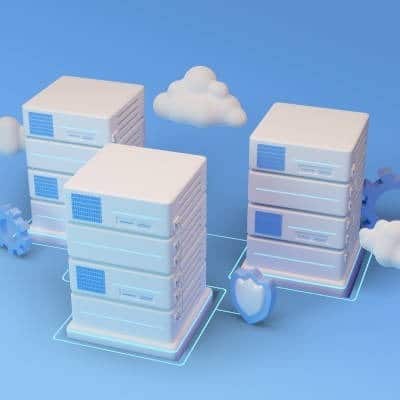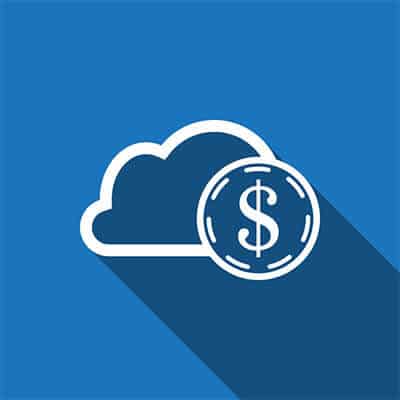SASE has established itself as the de facto standard for future-proofing business networks. Gartner developed the term “secure access service edge methods” in 2019. They come in many forms and sizes. Now that many organizations (and investors) have adopted SASE, it is time to assess if it lives up to its big boasts of cost-effective security, agility, and adaptability.
There’s a lot to consider when it comes to cloud computing… a lot more than many people might anticipate. Let’s hash out what is really required when it comes to properly managing your cloud resources.
Some vulnerabilities can fly under the radar for quite some time, some for months or even years. This is the case with a recently discovered Microsoft Azure database vulnerability. The exploit, discovered by cloud security provider Wiz, is found in Cosmos DB, Microsoft Azure’s managed database service, and it’s a real nasty one at that. Let’s dive into the details and see what we can learn from the incident.
The Benefits of Cloud Computing Before we get into the negatives presented by cloud computing, we should look at the benefits. Today’s cloud is a secure, reliable computing option that can provide a business the access to tools that can help their ability to coordinate, execute, and support their operations. Additionally, most computing tools that you can host yourself, you can host in the cloud. With different parts of your businesses needing different tools to function this can substantially decrease your capital output for your business’ IT. On top of the massive amount of workable options available, most cloud computing platforms are managed by the cloud provider, further removing the coordination and cost associated with IT support and system administration. For this reason, cloud computing is often looked on as having a lot of value, especially regarding solutions for collaboration, storage, backup, and communications. So, What’s Bad About Cloud Computing? After listing all the positives, what could possibly be negative about cloud computing? In the cloud, companies often pay too much for their computing. Now you have to understand, the ease of use, the scalability, and the anytime/anywhere access provides value of its own, no doubt, but if you pay too much for your business’ computing, you are still paying too much. While cloud computing does make a lot of sense for many businesses, if you overextend yourself with SaaS offerings, storage, or processing you may actually be renting for a lot more than you think. Think about your business’ computing like buying a house vs. renting. When you pay the per month rate from another provider, you are effectively renting your tools. Sure, owning your own house takes a lot more capital up front, but payments are less expensive and eventually, you’ll own it. If you don’t like that analogy, then consider that a company that loses track of its cloud output, or overextends itself in the cloud, is throwing away money. If that goes on for a few months, it could have a major effect on your technology budget. At SRS Networks, we want to help you make the best technology decisions for your particular situation. If you would like to get an assessment, or if you just want to talk to one of our IT professionals about how you can affordably improve your IT, reach out to us today at (831) 758-3636.
Defining Each On-Premise Solutions On-premise solutions are those that a business keeps in their office, on privately-owned and maintained servers. The actual makeup of these solutions varies from business to business, as it is dictated by each business’ needs. Cloud Solutions As you might imagine, cloud solutions are mostly those that are hosted off-premises. The cloud is a fanciful term to what amounts to data centers filled with servers, dedicated to providing invaluable services and resources to the businesses that rent them out. Let’s consider the positive aspects to each, as well as how these aspects measure up to the other’s less-positive features in comparison. Benefits of an On-Premise Solution One of the primary benefits of a business hosting its own server is the idea that control remains in the business’ hands. If a power outage—a basic and common enough business continuity threat—were to strike, a business hosting its own solutions on its own hardware could mitigate it effectively by turning to a backup power source until the outage was resolved. Comparatively, a business relying on cloud-hosted solutions also relies on the cloud provider to prevent downtime. In a similar vein, a business with control over its infrastructure is therefore in more control over its security. In theory, this means that a business can ensure its security is best suited for its environment and needs when its resources are kept in-house, close to the chest. Whether or not this is the case, however, also depends on the business. Benefits of a Cloud Solution Comparatively speaking, a cloud-hosted solution is going to be much more cost-effective for a business of any size to implement. For one, you aren’t obligated to pay for any more resources than you need in the moment, as you would when investing in your own hardware. This freedom gives you considerable flexibility to scale your use of the cloud as needed. In addition, you also don’t have any responsibilities directly associated with maintaining this hardware, eliminating those expenses as well. This also frees up your internal teams to focus on other priorities and projects. Of course, there are drawbacks to choosing exclusively between one or the other option. With on-premise servers, any upgrades are based on your schedule and your business’ financial capabilities, while cloud servers may not always be available (leading to downtime) and potential data security concerns are another concern that an on-premise server doesn’t have. This is why many businesses settle somewhere in the middle and elect to use both, in what is called a hybrid cloud, utilizing the best of both worlds. SRS Networks can help you determine which of these options is best for your business’ circumstances. Talk to one of our consultants today by calling (831) 758-3636.
Understanding How Business Computing Has Changed It wasn’t all that long ago that if you wanted to watch a movie, you needed an actual physical copy of that movie in your possession at the time. However, with the assorted streaming services available to us today for a monthly fee, all we have to do is find and access the movie we want to watch. The same can be said of television series – if there’s a particular episode you want to watch, doing so on demand has never been easier. This “Netflix Model” runs parallel to how business software has been delivered. Like was once the case of a movie, there was once no other option than to purchase a license for a particular software solution for each user that required it. The same could be said of many other business requirements – if it was needed, it needed to be purchased outright. Today, acquiring solutions for a business is more similar to the Netflix approach than it is going to a video store to pick up a copy of what you want. Why Cloud Computing is Now the Standard As you might imagine, there are quite a few reasons that companies like Adobe and Microsoft now offer their software titles via the cloud, rather than selling their customers installation codes or discs. As cloud titles, Adobe Creative Cloud and Microsoft Office 365 offer their users a few key benefits over the traditional method of software acquisition… while enjoying a few key benefits themselves at the same time. Reduced Piracy By its nature, cloud-hosted software greatly reduces the chance of software piracy, as the solution remains protected by the developer, accessed by approved users. Naturally, other developers like this idea, and are therefore motivated to offer their titles in this way as well. Reduced Requirements for Businesses A business that leverages a cloud solution will find that these solutions can help diminish their need of on-site infrastructure. Take, for instance, the email solution that comes with Microsoft Office. Once, businesses would need to invest in and maintain the equipment to host their email. Now, thanks to cloud solutions, this large financial expense can be eliminated. Reduced User Restrictions I’m sure you’ve been in this position before: you have the time to get something accomplished, but because you lack the resources to do so in the moment, the opportunity is wasted. Many cloud-based solutions can help eliminate the likelihood of this situation by allowing a user to leverage more than one device. Adobe allows their Creative Cloud users to boost their operational flexibility by utilizing two devices. Reduced Financial Toll While a user once needed to commit a large, lump expense in order to procure a software title, cloud computing’s delivery has shifted the way things are done. Now, with solutions delivered based on a regular service fee, businesses can adjust their budgets to more fluidly incorporate an operating expense, as compared to a significant, one-time charge. In this way, it makes it generally cheaper for businesses to incorporate software titles into their workflows. Which sounds better to you… $3000, up front, for one version of a software title, or a monthly fee of $25 for the latest version of that title, with updates managed by the provider? Is the Cloud […]
Profitability is less the measure of being able to turn a profit, and more the measure of how much profit you can make. For the successful small business, the integration of technology can dictate what kind of annual margins you are looking at. For the new company, however, it can be something even more critical: the difference between setting a course for success, or wallowing in failure. Today we analyze the cost difference between hosting your IT in-house, or choosing to host it in the cloud.
The cloud has proven to be an extremely useful tool for the modern business. Not only does it provide anywhere-anytime access to applications, processing, storage, et al; it also delivers those products as a service, allowing you to budget for recurring costs rather than major upfront ones. This provides your organization with functional, supported, and secure computing environments that eliminate a lot of the support costs that traditional computing environments require. It sounds like a perfect scenario for small and large businesses alike, but things aren’t always what they seem, as a lot of cloud users have found that they have incurred several hidden costs by using cloud platforms. Today, we take a look at these hidden costs.
- 1
- 2








